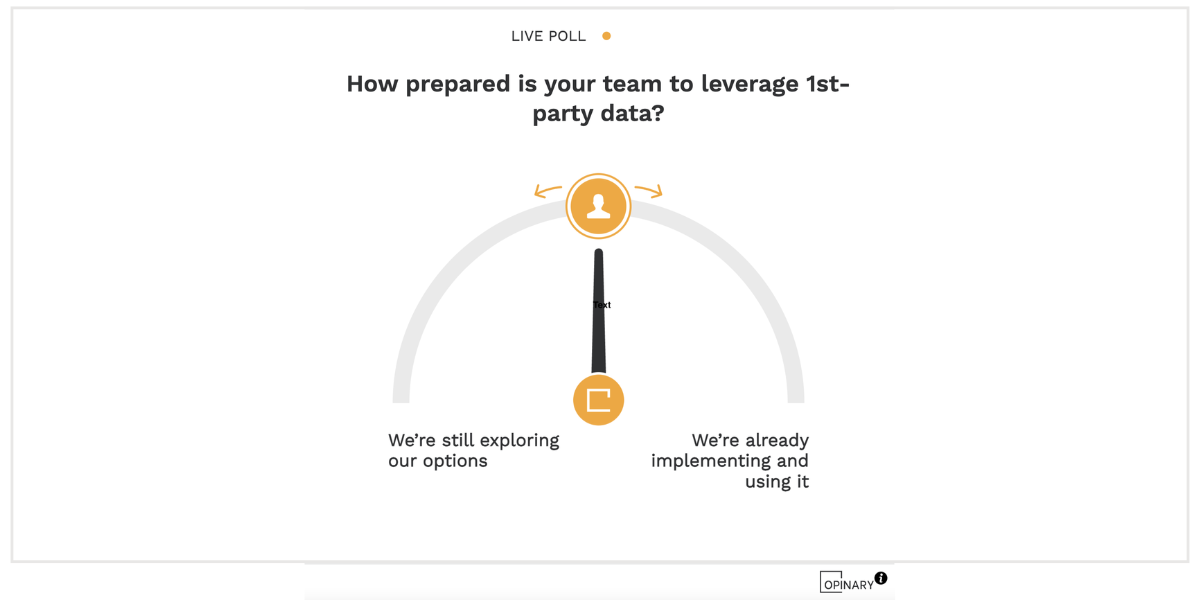Notes from London
Traffic woes

Welcome back to The Rebooting. Today, some notes from my trip to London, comparing the mood among publishers here to back home. Also: Highlights from our latest research report on the state of video advertising for publishers.

DMG Ireland's first-party data hack

A content site’s biggest asset is its audience, and 60% of marketers consider 1st-party data essential.
DMG Ireland used Opinary’s in-article polls to capture user-declared data and channel it into their DMP, Permutive, while maximizing audience engagement. This boosted CTRs by 60%, brand engagement by 80%, CPMs by 40%, and strengthened advertiser relationships.
Publishers like The Financial Times, Yahoo, or NBC Universal also use Opinary to activate readers and drive conversions.
DMG’s Doug Farrell shares how this approach reshaped their strategy.
Notes from London
One of the things I like about London compared to New York is how much more humane it is. I have yet to find a mountain of trash bags on sidewalks and homelessness isn't out of control. The riddle of many American cities is the data shows how far ahead the U.S. economy is compared to Europe, yet the experience of visiting these places doesn't match up to the economic data. It reminds me of how I've read for a generation what a basket case Japan is, only it has always been amazing any time I've visited.
Some notes from my trip to London this week:
American publishers have structural advantages. The overall publishing industry faces plenty of challenges. That said, U.S. publishers have the benefit of operating in a strong and growing economy that’s decoupling from the rest of Europe. The growth rates between the U.S. and UK have diverged significantly since Covid.
One publisher remarked to me how U.S. colleagues would lament a client would only do a test budget that was several orders of magnitude larger than what the same deal would be here. There’s simply a scale issue at play. There are more Ms in a CPM in America with a population of 335 million vs the UK at 68 million. American GDP is far higher, which means CPMs are at least 25% higher there, in one estimate I was given.
As always, Americans should hold off on complaining to be thankful they have the dumb luck of being in a massive economy that despite its myriad issues continues to outperform the rest of the world.
The UK publishing market is more feral. I’m unsurprised that many U.S. newsrooms are bringing in British editors. The news culture here is simply more feral, far less self-serious. The resources available to U.S. newsrooms are far greater than what a counterpart in the UK has on offer. The more-with-less era has been the default here.
That’s one reason I think U.S. news publications have failed to make much of a dent in a market with a shared language. The UK has a fiercely competitive news market at all levels. American news publishers, including The New York Times, aren’t top tier players. Meanwhile, British publishers are looking to America to escape a stagnant domestic economy.
Give credit to the Daily Mail. It has carved a niche in the U.S. over a decade. It has been followed by several London news publications, including The Guardian, The Spectator, The Sun and The Independent. The sheer size of the U.S. economy relative to the UK makes this kind of expansion far more attractive than a U.S. publisher eyeing the UK for growth. I’m skeptical most British publications will make much of a dent in the U.S. The costs are astronomical compared to the UK, and many publications end up devoting too few resources to their American operations. That said, losing in the U.S. market is a lot like losing at search: it’s still lucrative, all things considered.
Traffic and AI are global concerns. Before the New Growth Agenda event in New York last week, I asked publishing executives for the topics they wished to discuss that were on their minds. The most common response was around traffic and the downstream impact of AI’s encroachment on search. Prior to a dinner we held in conjunction with Outbrain last night, I repeated the same exercise. Similar results.
One food site publisher here shared a common concern: How to get traffic to recipe content when search is providing answers directly. This echoed a top publishing executive in New York who wondered, “Are we destined for AI Demand Media?” This evening, at the WordPress VIP Innovation Showcase, I'll be talking to Sofia Delgado, head of audience at Metro, about how the publisher managed to grow audience while cutting back on the amount of content it produced.
My regular question to publishers is fundamental: Do they believe people will be visiting their webpages and hitting a back button in five years? Nobody has a definitive answer to that question.
This has led to more discussions of the need for collaborative approaches. Publishers are no longer competing with each other. The market has moved away from the category altogether in favor of the promise of close-loop attribution from platforms and retail media. One interesting talking point in London is the promise of ProRate.AI, a startup from paid search pioneer Bill Gross that has signed up a slew of UK publishers. Daily Mail owner DMG Media has even taken an equity stake in the company, which is now valued at $130 million.

Machine learning contextual recommendations
Audiences expect relevant video content on every page. Powered by large language model (LLM) technology, EX.CO’s contextual recommendation engine analyzes webpages to effortlessly match videos, boosting UX and monetization. Grab EX.CO’s one-pager to see how AI can match the right video to every article on your site.
The state of publisher video strategies
The Rebooting’s latest research examines the tradeoffs publishers make when implementing video strategies. Text publishers need to diversify their content. The ad market has shifted. The fastest growing areas are in performance marketing and video. On video, publishers are usually trying to balance the need to diversify their ad revenue with the higher CPMs fetched by video advertising with the reality that their audience is usually coming to them to read articles.
Among the findings:
- 73% of publishers said they would choose monetization over user experience
- 77% of publishers said contextual relevance to article content is important for video
- 70% of publishers said they do not monetize vertical video as well as wide format video
Thanks for reading. Send me a note with feedback by hitting reply.




